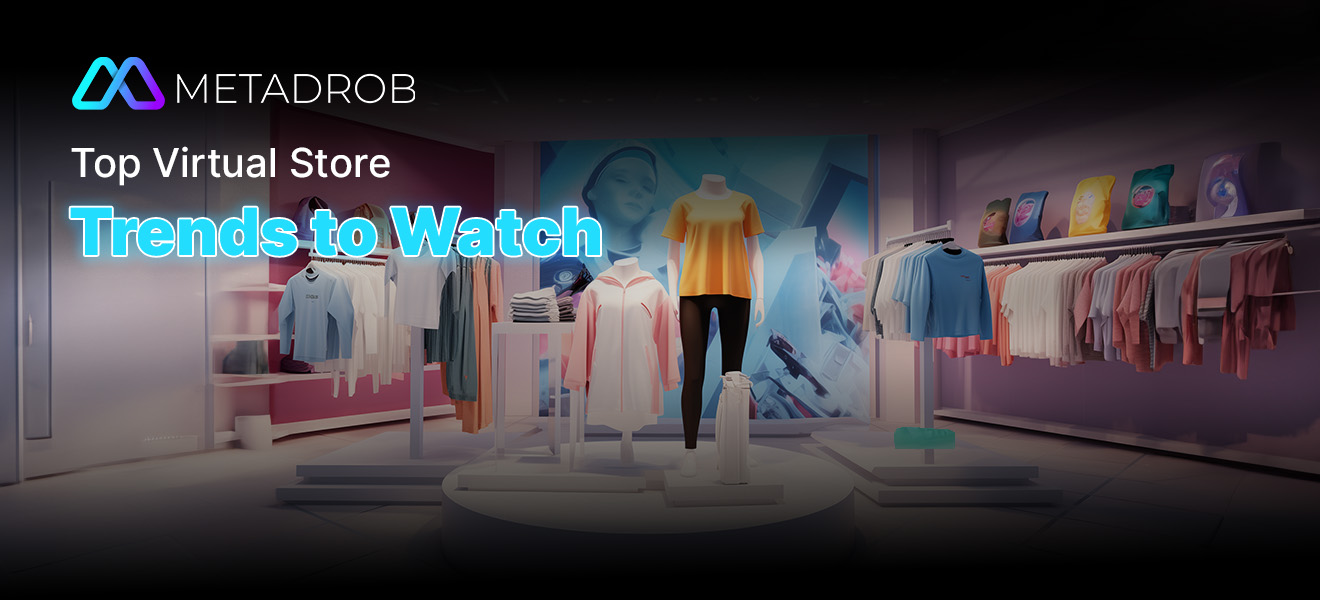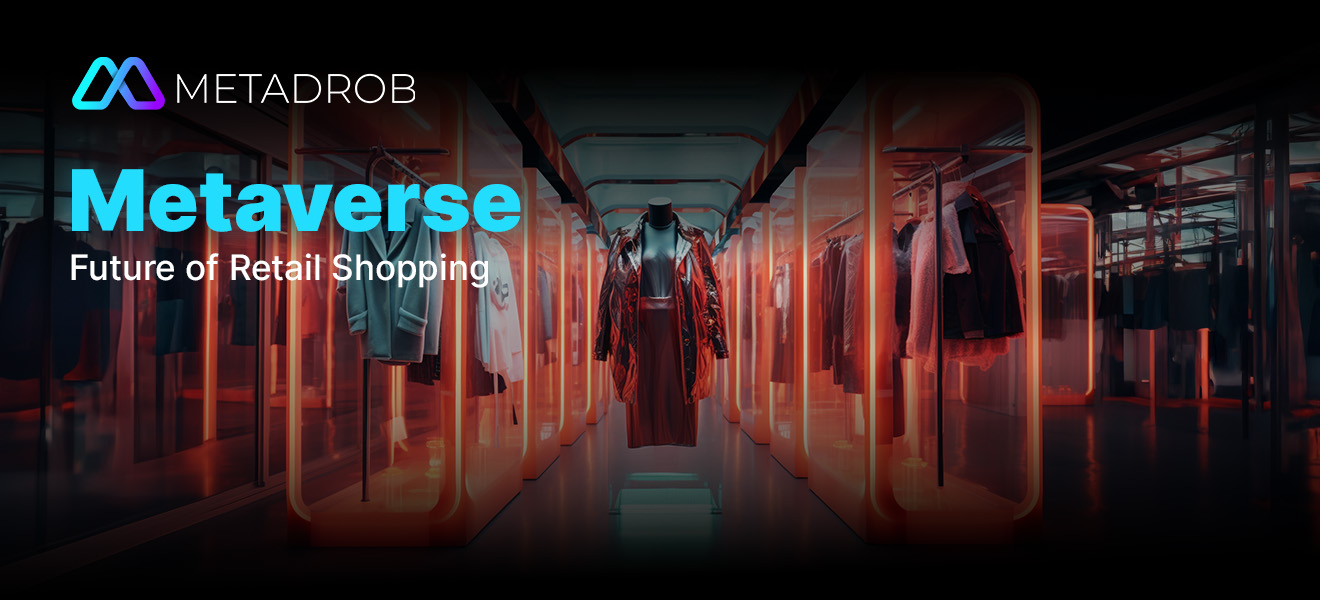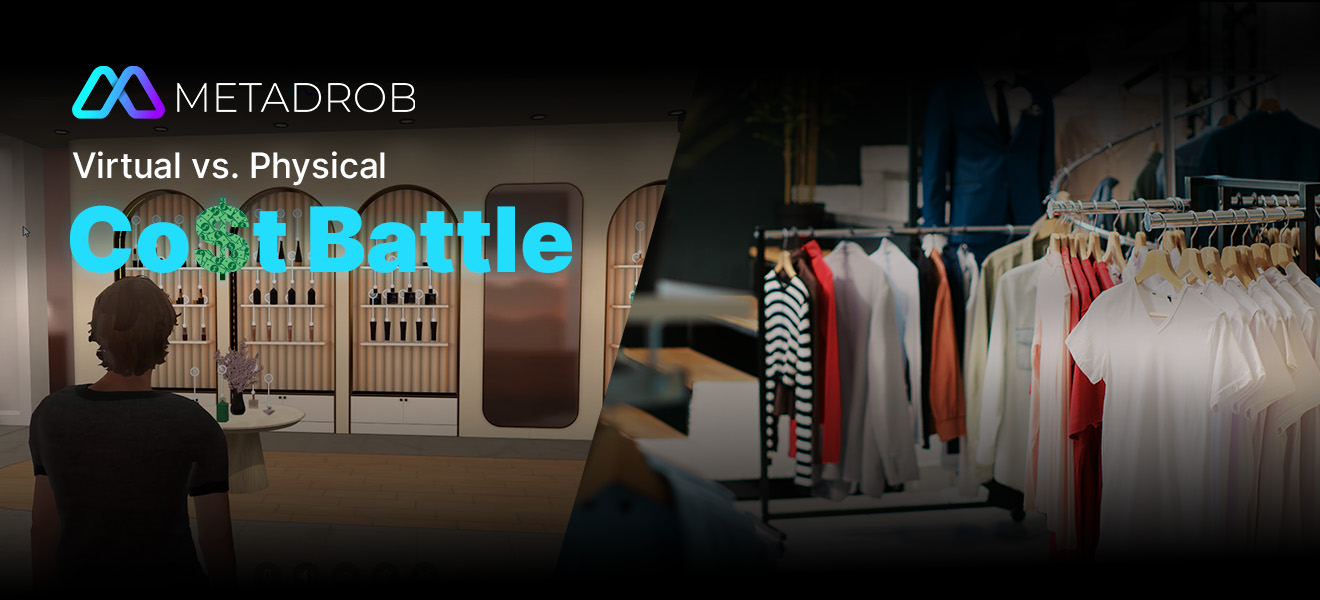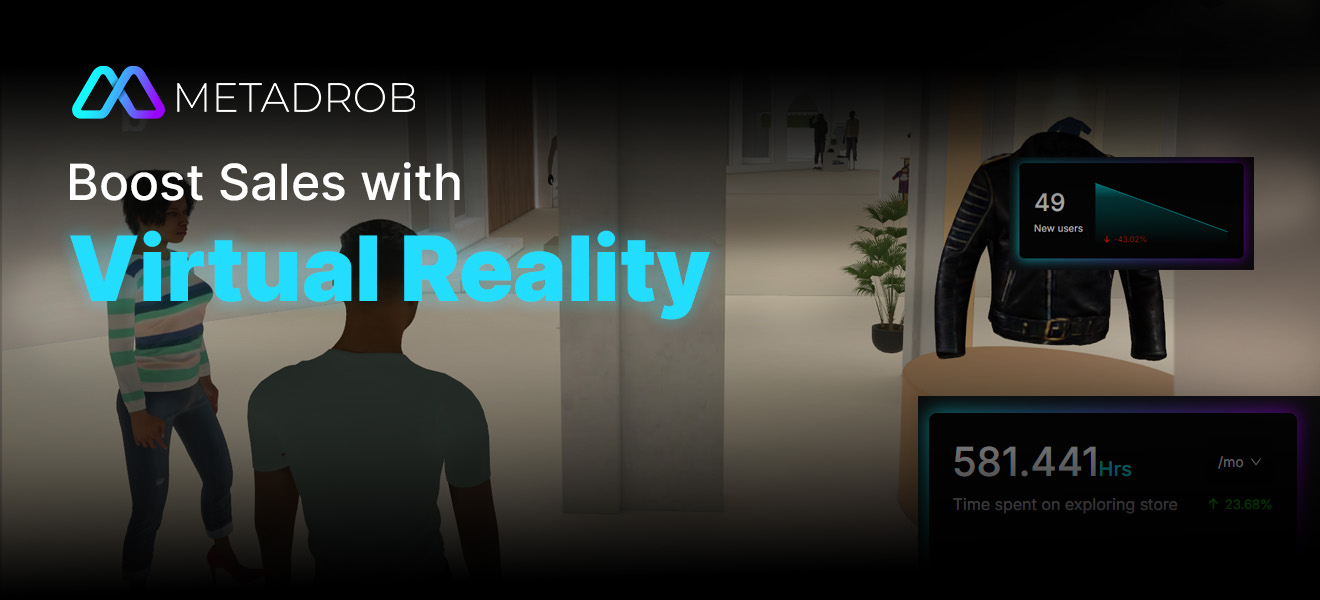Which Features Drive Customer Engagement in Virtual Stores?

The retail landscape is changing dramatically because of advances in technology and changes in preferences among consumers. Examples of such innovative developments abound – virtual stores featuring immersive shopping through augmented reality, virtual reality, and other technological innovations. As we glance into the near future, several trends that will gain dominance in virtual stores can be noted.
Just recently, it was forecasted that investments in AR/VR technology will touch $7.3 billion by 2024, making it all the more pressing for retailers to introduce virtual stores and maintain their position in the market. The blog aims to explore these trends and their implications for retailers and consumers.
1. The Rise of Augmented Reality (AR) and Virtual Reality (VR):
Among the most important trends that will shape future virtual stores, the integration of augmented reality and virtual reality technologies will be the most dominating. Such an interactive experience means that a shopper will find access to the products in ways that traditional online shopping simply cannot offer. According to recent studies, online stores that provide cutting-edge AR experiences are favored by around 61% of customers.
- Increased Product Visualization: AR enables consumers to view what it would look like to have a particular product in their space before purchasing it. For example, furniture stores can deploy AR-enabled applications to enable customers to see and preview how the furniture would appear in one’s home.
- Immersive Brand Storytelling: Brands can create engaging narratives by using VR experiences to move customers into virtual worlds that may help them better understand and explore products in meaningful ways.
2. Phygital Retail Experiences
Phygital retail is in vogue nowadays as retailers look forward to offering seamless experiences across channels. Phygital retail combines the best of both physical and digital shopping experiences, blending technology with in-store environments to create a seamless journey for customers. It allows shoppers to move effortlessly between online browsing and offline purchasing, offering personalized services and enhanced convenience. By merging these two worlds, retailers can provide a more interactive and engaging shopping experience.
- Integrated Shopping Journeys: The retailer can seamlessly create cohesive experiences using technology, ensuring that the customer can easily shift between online and offline environments. A customer may see something on the Internet and then go to a physical store to pick up the product or get in-store services.
- Personalized Recommendations: Using data analytics, retailers can make recommendations to customers based on their behavior online the next time they shop in physical outlets. This has increased customer engagement and satisfaction.
- Click-and-Collect Services: Numerous customers now employ click-and-collect services, where customers place orders online and collect the products at a local store. That saves on shipping and is convenient for consumers.
3. AI-Powered Personalization
Artificial intelligence is transforming how retailers understand and interact with their customers. AI-powered personalization enables brands to showcase their products and services based on individual preferences and behavior.
- Dynamic Product Recommendation: These are based on algorithms used by e-commerce platforms to make product recommendations in real time by analyzing customer data. The possibilities of conversion will be higher because the customer will find a variety of products that interest them.
- Chatbots and Virtual Assistants: AI-powered chatbots are increasingly being seen in virtual stores where every customer can receive immediate assistance while making a purchase. Virtual assistants help take customers through the purchase journey. They can answer questions, make recommendations, and even help with checkouts.
- Predictive Analytics: Retailers can use AI and some predictive analytics regarding historical trends to optimize inventory management and marketing strategies.
4. Enhanced Customer Engagement Through Gamification
Gamification is turning out to be a very necessary strategy for most retailers to raise engagement among customers in virtual stores. The use of game-like elements in the shopping experiences not only increases the level of engagement but also boosts the sales figures.
- Reward Systems: Loyalty programs can be offered by retailers that reward customers for making specific purchases, promoting products on social media, or other actions. Reward systems result in repeated visits and encourage brand loyalty.
- Interactive Interventions: Virtual stores can provide interactive games or challenges that will make the customer want to explore the products. Brands can, for example, create scavenger hunts inside their virtual stores, which can lead to exclusive discounts or promotions for shoppers.
- Social Sharing Features: The gamified components typically encourage social sharing so that customers can invite friends or share achievements across social media platforms, increasing brand awareness.
5. Voice Commerce
One of the prominent trends in e-commerce due to voice-activated technologies is voice commerce. Now that smart speakers and virtual assistants are common, consumers can opt for shopping activities through voice commands.
- Hands-free: With voice commerce, one can browse products, add items to the cart, and make a purchase based solely on simple voice commands. This hands-free shopping appeals particularly to busy individuals who seek convenience.
- Personalized Voice Assistants: Brand-specific voice assistants are developed by retailers to give personalized recommendations that rely on data on customer preferences and purchase histories.
6. Blockchain Technology for Security and Transparency
Blockchain technology is gaining recognition for its potential applications in e-commerce, particularly concerning security and transparency in transactions.
- Secure Transactions: It has secure transactions owing to its decentralized ledger system, which allows for more security in any transaction that is undertaken online because fraud and hacking are prevented.
- Supply Chain Transparency: Retailers can use blockchain technology to trace the origin of goods and movement in the supply chain, thereby ensuring the consumer that the products are authentic and sourced ethically.
- Smart Contracts: Smart contracts facilitate auto-execution of transactions depending on certain predefined conditions, thus simplifying activities such as settlements or order deliverance, which eliminates extra administrative costs.
7. Multiplayer Functionality
The next big thing for virtual reality stores is multiplayer functionality, which allows customers to shop with other people at the same time, no matter the distance. It enhances the experience of shopping by allowing more social interactions and the capability of collaboration with friends and family.
- Social Shopping: The customer can invite friends to join him or her in the virtual store to browse through the products, share opinions, and make decisions as a group – a way to make the whole experience more engaging and fun.
- More Engagement: With multiplayer, customers will remain in the store for much longer, leading to more conversations.
- Shared Experiences: This allows users to interact with each other and have a fun and memorable shopping experience that motivates them to come back repeatedly and thus promote brand loyalty.
8. Data Privacy and Security
With the increase in e-commerce, consumers are raising alarm and expressing despair over data privacy and security. Retailers must secure sensitive information while being transparent in their activities to generate consumer confidence.
- Secure Transactions: Blockchain provides a decentralized ledger that enhances transaction security by reducing the risk of fraud or hacking during online purchases.
- Transparent Data Usage Policies: Brands should communicate clearly how they collect, use, and protect customer data while offering options for users to control their privacy settings easily.
- Compliance with Regulations: Adhering to regulations like GDPR ensures that retailers respect consumer rights regarding data privacy while fostering trust among shoppers who prioritize security when making purchases online.
9. The Emergence of the Metaverse
The concept of Metaverse has become extremely popular as it opens up new opportunities in virtual shopping. It encompasses a digital space where users can enjoy phenomenal experiences combining social, gaming, and commercial activities.
- Virtual Shopping Worlds: Enterprises have the opportunity to design an extensive outer space in which clients may view the product, attend events, and interact with the brand in more interesting and engaging ways.
- Digital Avatars: Customers can make their avatars to go around these virtual spaces, making the entire experience a lot more fun and engaging.
- Seamless Integration of Physical and Digital: In the Metaverse, brands can offer virtual goods as well as physical products, creating new marketing streams.
10. Continuous Innovation in User Experience
To remain competitive in the evolving landscape of virtual stores, retailers must prioritize continuous innovation in user experience (UX).
- Mobile Optimization: As mobile commerce continues its upward trajectory, optimizing online virtual stores for mobile devices is crucial for capturing a larger audience segment who prefer shopping on smartphones or tablets.
- Seamless Navigation Design: Ensuring intuitive navigation within virtual stores enhances user experience by allowing customers to find products quickly without frustration or confusion during their shopping journey.
- Feedback Loops for Improvement: Gathering customer feedback through surveys or analytics enables retailers to identify pain points within their virtual stores promptly – allowing them to make necessary adjustments based on real-time insights from shoppers themselves.
What’s the Perfect Choice for Your Virtual Store?
Metadrob is the ideal solution for creating your virtual store due to its innovative features and user-friendly interface. With no coding required, retailers can effortlessly design immersive 3D showrooms that captivate customers and enhance product visualization. Metadrob’s advanced analytics provide valuable insights into customer behavior, allowing for data-driven decisions.
Additionally, our multiplayer functionality promotes a social shopping experience, making it a comprehensive platform for businesses looking to elevate their online presence and drive sales. BOOK FREE DEMO with us right away to know more about creating a virtual store platform.
Connect with Metadrob
Ready to take the first step towards unlocking opportunities, realizing goals, and embracing innovation? We're here and eager to connect.

+91 966-004-4020






